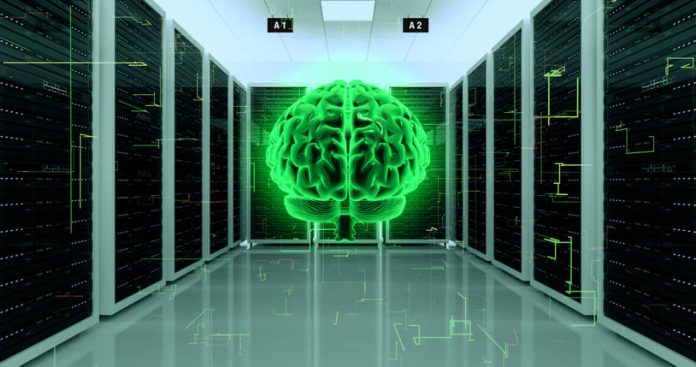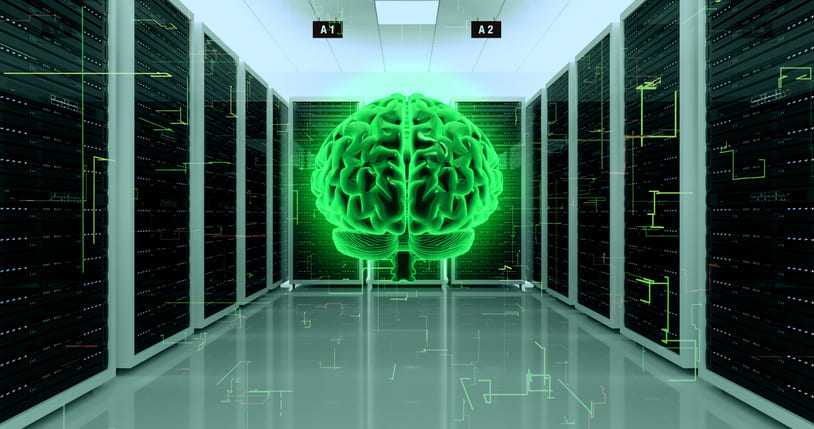[ad_1]

By Wesley Anastase-Brookes
The growth of AI and its vast energy consumption could pose challenges for sustainability goals, prompting businesses to rethink their data centre strategy around green energy and greener locations
Every sector is keen to harness the potential of artificial intelligence (AI) – from deploying chatbots to fully automating production facilities. It’s a rapidly growing market, expected to increase twentyfold by 2030, to an impressive $1.9tn.
This rapidly escalating use of AI across multiple industries will trigger organisations to reassess their IT infrastructure, emphasising on energy efficiency and sustainability as key factors in their business strategy. Data centres will be at the core of these decisions, and the good news is that some have already adapted to these new demands.
The AI surge and its implications
The interest and progress in AI were significant even before ChatGPT’s emergence in late 2022, which generated a wave of excitement.
The explosion in uptake of AI we’re witnessing is clearly not a trend – it represents a profound shift in the operational landscape of various industries, including healthcare, finance, education, and manufacturing.
Cloud service providers are leading this transformative phase, developing clouds that provide AI functionalities either as a standalone offering or as part of their existing service portfolios. In anticipation of market needs, they are introducing AI-enhanced solutions alongside their conventional cloud services.
AI in data centre operations
Data centres are essential to this transformation, playing a pivotal role in unlocking the full potential of AI. While legitimate environmental concerns face the sector, more forward-thinking providers have been concentrating on improving energy efficiency and maximizing sustainability for some time.
This is crucial because, without proper preparation, the significant processing demands of emerging AI services could present considerable challenges in terms of reliability, sustainability, and costs. AI tasks, particularly those involving deep learning, require substantial computational power for activities like data analysis, pattern identification, and training neural networks.
These increased workloads naturally result in greater energy use. For instance, the graphics processing units (GPUs) utilised in AI processing consume considerably more energy than traditional central processing units (CPUs).
Advancing to sustainable power management
The ability of data centres to enhance energy efficiency and diminish their carbon emissions depends on the operator’s implementation of technological advances and sustainable practices. The two must go hand-in-hand.
The surge in power demand from AI requires a thorough reassessment of energy procurement, consumption, and optimisation strategies. This means not only addressing immediate energy requirements but also aligning with overarching environmental objectives, with a significant focus on integrating renewable energy sources.
Data centres are progressively adopting solar, wind, and hydroelectric power. This is not a gesture – it is a strategic decision aimed at ensuring long-term sustainability and financial viability.
Energy efficiency is a crucial element of sustainable power management. Cutting-edge AI algorithms are employed to refine data centre energy consumption, ranging from cooling systems to server operations.
These AI-enhanced efficiencies not only lower the energy footprint but also boost operational effectiveness. Innovative practices like repurposing waste heat from data centres for communal heating initiatives or other industrial applications signify a move towards a more circular and sustainable energy model.
Rethinking data centre locations for AI requirements
AI is transforming the landscape of data centre locations, moving beyond the traditional need to be close to major cities to reduce latency. With AI, the urgency for low-latency data centres diminishes. The technology’s learning models do not require instantaneous responses, offering greater flexibility in data centre sites.
This shift allows for the decentralisation of AI computing, easing the power demands on major European cities and permitting the use of data centres in areas with easier access to renewable energy sources. The result is a welcome reduction in environmental footprint.
Organisations are choosing to situate their AI training and modelling facilities outside major urban areas, selecting locations with less strained electricity grids. This not only alleviates pressure on data centres near customer bases, where low latency is crucial, but also supports economic growth in less developed areas through improved infrastructure and more jobs.
Ark’s Spring Park campus in rural Wiltshire in western England exemplifies this trend, for instance. Despite its countryside location, it’s well-connected by rail and close to the M4, offering a flexible and sustainable option for organisations looking to expand beyond urban confines. Equipped for AI applications, a data centre like this provides accessible, scalable solutions.
Training and deploying
AI’s transformative impact reaches beyond technological advances, bringing significant advantages to wider society. From the early identification of illnesses to predictive analytics that improve numerous industries, the potential gains are vast.
AI is fundamentally segmented into distinct learning and generative stages. The learning stage encompasses the training of the model, a task that requires considerable energy but can be conducted remotely.
Once businesses have developed these models, they deploy them to end-users, enabling real-time automation. This stage also entails considerable energy use, necessitating a location nearer to the end-user.
AI, data centres and the future
As we move further into the AI era, our collective responsibility for sustainable and socially responsible innovation will only expand. Data centre operators and their clients must collaboratively navigate these evolving dynamics, meticulously balancing the pursuit of technological progress with the principles of environmental stewardship.
The path forward is intricate, yet the industry’s dedication to knitting advanced technology into ecological conscientiousness is real, with considerable achievements already under its belt.
The future of AI and data centres transcends technological prowess; it’s about questioning established norms and forging a trajectory that aligns innovation with broader social consciousness.
About the Author
 Wesley Anastase-Brookes is the Commercial Sales and Marketing Director at Ark Data Centres. Wesley is an industry sales and marketing professional with 14 years’ experience working in data centre wholesale leasing and colocation. In 10 years with Ark Data Centres, Wesley has been influential in leading Ark’s business and developing customer solutions across enterprise, AI, and hyperscale markets working closely with all of the major public cloud companies. Outside of the data centre world, he shares an interest in winemaking which he pursues on the family vineyard in the heart of the Bordeaux winemaking country.
Wesley Anastase-Brookes is the Commercial Sales and Marketing Director at Ark Data Centres. Wesley is an industry sales and marketing professional with 14 years’ experience working in data centre wholesale leasing and colocation. In 10 years with Ark Data Centres, Wesley has been influential in leading Ark’s business and developing customer solutions across enterprise, AI, and hyperscale markets working closely with all of the major public cloud companies. Outside of the data centre world, he shares an interest in winemaking which he pursues on the family vineyard in the heart of the Bordeaux winemaking country.
[ad_2]
Source link












